Salinity Management Guide
Problems involving trees, shrubs, and ground covers
Injury resulting from sunlight
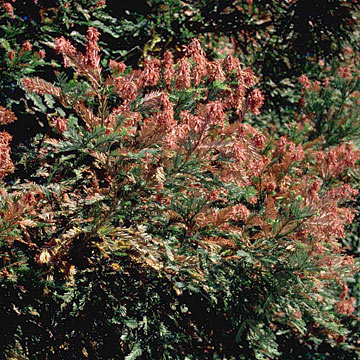
Photo courtesy of Larry Costello. |
Symptoms: Shoots on southwest side of this coast redwood tree are severely "burned." Diagnosis: The new growth was burned during a heat wave in which daily temperatures repeatedly exceeded 90oF. Solutions: Certain species are particularly sensitive to sunburn. Allow the tree to recover and then prune away dead portions. |
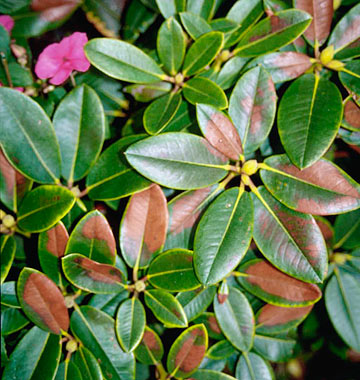
Photo courtesy of Larry Costello. |
Symptoms: Growing tips of rhododendron bush are reddish brown and necrotic. Diagnosis: This sunburn resulted from afternoon sun exposure when temperatures exceeded 90 oF. Solutions: Rhododendron is a shade-loving plant and should not be planted in sunny, hot locations. |
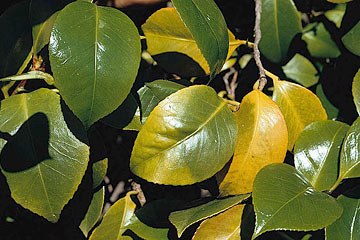
Photo courtesy of Raabe. |
Symptoms: Yellowing of leaves on camellia bush. Diagnosis: Camellia was exposed to excess sunlight. Solutions: Camellia is a shade-loving plant and should not be planted in sunny, hot locations. |
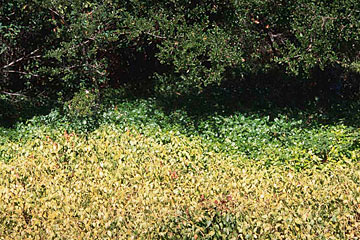
Photo courtesy of Larry Costello. |
Symptoms: Dwarf periwinkle appears "burned." Diagnosis: Injuries are the result of high light intensity. Solutions: Provide shading, perhaps with other closely-planted bushes. Periwinkle cannot tolerate high light intensity. |
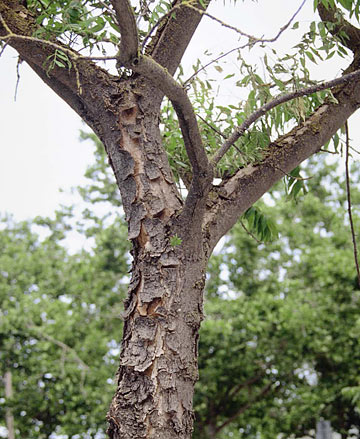
Photo courtesy of Larry Costello. |
Symptoms: Bark is injured on the trunk of this Chinese pistache. Diagnosis: The damages are from sunscald. Sunburn and sunscald symptoms are similar. Solutions: Sunscald and sunburn injuries on young trunks can be prevented by applying white interior latex paint diluted 50% with water. |
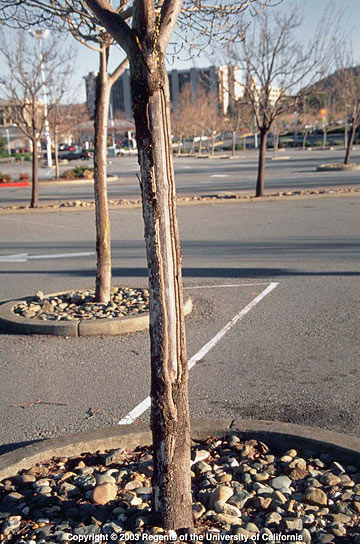
Photo courtesy of Larry Costello. |
Symptoms: Drying, cracking, and bark fallout on ash tree in parking lot. Diagnosis: The injuries on the southwest side of the trunk are due to sunburn. Solutions: Sunburn injuries on young trunks can be prevented by applying white interior latex paint diluted 50% with water. |
| « Previous page | Next page » |